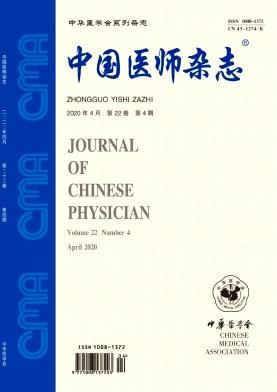The assessment of B-type natriuretic peptide be used as a prognositic factor for community-acquired pneumonia
Q4 Medicine
引用次数: 0
Abstract
Objective To explore the value of B-type natriuretic peptide (BNP) be used as a prognostic factor for community-acquired pneumonia. Methods This was a multicenter, retrospective study. Data of patients hospitalized with community-acquired pneumonia during 2014/1/1 to 2015/12/31 from four tertiary hospitals were reviewed, including demographic and clinical features, and outcomes. Univariate analysis and logistic regression analysis were performed to determine risk factors for 30-day mortality. Receiver operating characteristic curves (ROCs) was performed to verify the accuracy of BNP>1 000 pg/ml, CURB-65 score and BNP>1 000 pg/ml+ CURB-65 score (B-CURB65) as 30-day mortality predictors in the study patients. Results 1 786 patients hospitalized with community-acquired pneumonia (CAP) were entered into the final analysis. The 30-day mortality was 4.7%. Logistic regression analysis confirmed blood BNP>1 000 pg/ml was an independent risk factor associated with 30-day mortality of CAP patients. The area under the curve (AUC) of B-CURB65 was 0.774, which was higher than CURB-65 score (AUC=0.625, P=0.002). Conclusions Blood BNP is a valuable biomarker related to the 30-day mortality of CAP patients, which can increase the predicting accuracy of CURB-65 score. Key words: Natriuretic peptide, brain; Community-acquired pneumonia; Mortality评估b型利钠肽可作为社区获得性肺炎的预后因素
目的探讨b型利钠肽(BNP)作为社区获得性肺炎预后因素的价值。方法采用多中心回顾性研究。回顾性分析四所三级医院2014年1月1日至2015年12月31日住院的社区获得性肺炎患者资料,包括人口学、临床特征及转诊结果。采用单因素分析和logistic回归分析确定30天死亡率的危险因素。采用受试者工作特征曲线(roc)验证BNP>1 000 pg/ml、CURB-65评分和BNP>1 000 pg/ml+ CURB-65评分(B-CURB65)作为研究患者30天死亡率预测指标的准确性。结果1 786例社区获得性肺炎(CAP)住院患者纳入最终分析。30天死亡率为4.7%。Logistic回归分析证实血BNP>1 000 pg/ml是CAP患者30天死亡率的独立危险因素。B-CURB65的曲线下面积(AUC)为0.774,高于CURB-65评分(AUC=0.625, P=0.002)。结论血BNP是与CAP患者30天死亡率相关的有价值的生物标志物,可提高CURB-65评分的预测准确性。关键词:利钠肽;脑;社区获得性肺炎;死亡率
本文章由计算机程序翻译,如有差异,请以英文原文为准。
求助全文
约1分钟内获得全文
求助全文

 求助内容:
求助内容: 应助结果提醒方式:
应助结果提醒方式:


